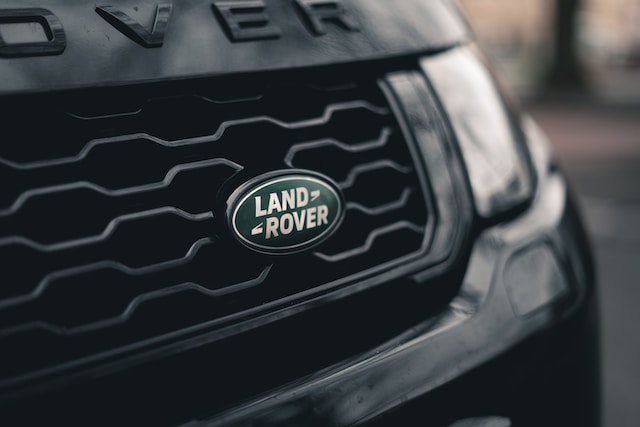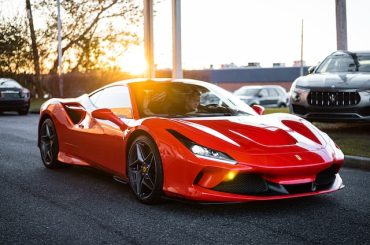Before we dive deep into the PESTEL analysis, let’s get the business overview of Jaguar Land Rover. Jaguar Land Rover (JLR) is a British multinational automotive company that produces luxury and all-terrain vehicles.
History: Jaguar Land Rover has its origins in several British car brands, including Jaguar, Land Rover, and several others. These brands underwent multiple ownership changes over the decades before Jaguar and Land Rover were eventually acquired by Tata Motors, an Indian multinational automotive manufacturing company, in 2008 from Ford Motor Company.
Brands:
- Jaguar: This brand is known for its luxury sedans, sports cars, and more recently, SUVs. It has iconic models like the XJ and the F-Type.
- Land Rover: Renowned for its rugged off-road capability and luxury features, the brand includes the Defender, Discovery, and the Range Rover line.
Business Strategy:
- Electrification: In recent years, JLR announced plans to electrify its lineup, aiming for Jaguar to become an all-electric luxury brand by 2025. Land Rover will also introduce electric variants alongside its conventional engines. In July’23, JLR-owner announced building a £4bn electric vehicle battery factory in the UK.
- Luxury Positioning: JLR vehicles target the premium segment of the market, emphasizing luxury, performance, and craftsmanship.
- Global Expansion: While the UK remains a vital market for JLR, the company has been focusing on increasing its presence in markets like China, the US, and Europe.
Manufacturing and R&D: JLR has multiple manufacturing facilities in the UK and international locations, including China, Brazil, and Slovakia. The company invests heavily in research & development, especially in areas like autonomous driving, electrification, and infotainment systems.
Financial Performance: Full-year revenues for FY23 of £22.8 billion, up 24.5% vs FY22. Meanwhile, the FY23 Adjusted EBIT margin1 of 2.4% and profit before tax of £97 million was a marked improvement from the (0.4)% Adjusted EBIT margin and £(455) million loss before tax in FY22. Full-year wholesales of 321,362 in FY23 were up nine percent compared to a year ago.
Here is the PESTEL analysis of Jaguar Land Rover
A PESTEL analysis is a strategic management framework used to examine the external macro-environmental factors that can impact an organization or industry. The acronym PESTEL stands for:
- Political factors: Relate to government policies, regulations, political stability, and other political forces that may impact the business environment.
- Economic factors: Deal with economic conditions and trends affecting an organization’s operations, profitability, and growth.
- Sociocultural factors: Relate to social and cultural aspects that may influence consumer preferences, lifestyles, demographics, and market trends.
- Technological factors: Deal with developing and applying new technologies, innovations, and trends that can impact an industry or organization.
- Environmental factors: Relate to ecological and environmental concerns that may affect an organization’s operations and decision-making.
- Legal factors: Refer to the laws and regulations that govern businesses and industries.
In this article, we will do a PESTEL Analysis of Jaguar Land Rover.
PESTEL Analysis Framework: Explained with Examples
Political
- Government Policies: In various regions, governments have been pushing for stricter emission standards to combat climate change. This has led JLR to invest in cleaner, more efficient technologies, particularly electrification.
- Brexit: Being a UK-based company, JLR was significantly affected by the UK’s decision to leave the European Union. Brexit brought about uncertainties regarding tariffs, trade agreements, and the movement of goods and workforce between the UK and EU countries. This has implications for JLR’s supply chain, manufacturing, and market access.
- Trade Tariffs and Regulations: Tariffs and trade disputes, especially between major global economies, can impact JLR’s international operations and sales. For instance, trade tensions between the US, China, and the EU can affect JLR’s export strategies.
- Political Stability: Stability in the countries where JLR operates is crucial. Political unrest or instability can affect sales, manufacturing, and the supply chain. For example, uncertainties in regions like the Middle East, a luxury car market, can influence JLR’s business there.
- Tax Policies: Changes in corporate tax rates, vehicle taxation based on emissions, and incentives for electric vehicles (EVs) can impact JLR’s profitability, pricing strategies, and R&D investments.
- Infrastructure Development: Government investments in infrastructure, such as charging stations for EVs, can influence JLR’s strategy regarding launching and marketing its electric vehicles.
Economic
- Economic Growth: The overall economic health of JLR’s key markets, like the UK, US, China, and Europe, plays a significant role. During economic booms, consumers are more likely to invest in luxury vehicles, while economic downturns can reduce demand for high-end products.
- Exchange Rates: As an international business, JLR deals with multiple currencies. Fluctuations in exchange rates can affect the company’s profits, especially when converting sales from international markets back to British pounds.
- Interest Rates: Changes in interest rates can influence consumer financing decisions. Higher rates might make auto loans more expensive, potentially reducing the demand for vehicles, while lower rates could spur sales.
- Inflation: Rising inflation can increase manufacturing costs for JLR, from raw materials to labor. If these costs are passed on to consumers in the form of higher prices, it could reduce demand.
- Unemployment Rates: High unemployment in key markets can reduce disposable income and, in turn, the demand for luxury vehicles. On the flip side, low unemployment typically correlates with increased consumer spending.
- Credit Availability: The ease consumers can access credit impacts their ability to purchase vehicles. Stringent credit conditions might deter potential buyers, while easier credit can boost sales.
- Supply Chain Costs: Economic conditions in countries where JLR sources its parts can impact the cost and reliability of the supply chain. For instance, economic instability in a country producing essential components can disrupt production or increase costs.
Sociocultural
- Consumer Preferences: Societies evolve, and so do their preferences. The shift towards sustainable and environmentally friendly products has increased demand for electric and hybrid vehicles. JLR must adapt its product line to meet these changing preferences.
- Lifestyle Trends: The type of vehicle people prefer often reflects their lifestyle. For instance, an increasing urban population favors compact, efficient cars, while affluent suburban families lean towards luxury SUVs
- Brand Perception: JLR vehicles, especially the Jaguar brand, have historically been associated with luxury, status, and prestige. How societies view luxury and what they associate with status can impact JLR’s brand equity.
- Cultural Attitudes Towards Driving: In some cultures, driving is seen as a necessity, while in others, it’s a luxury or even a pastime. Understanding these nuances is crucial for JLR when entering new markets or promoting products.
- Demographic Changes: An aging population in many developed countries might prioritize different vehicle features (like safety and comfort) compared to younger demographics, who might value technology integration and aesthetics more.
- Social Mobility: As societies change and middle classes expand in emerging markets, a potential new customer base for JLR products exists. These new consumers might view owning a luxury vehicle as a symbol of their upward social mobility.
Technological
- Electrification: The push towards greener and more sustainable vehicles has seen a surge in electric vehicle (EV) technology. JLR must innovate and invest in electric and hybrid technologies to stay competitive and meet increasingly strict emissions standards.
- Autonomous Driving: The race towards fully autonomous vehicles is on, with many automakers investing heavily in this area. JLR needs to keep up with advancements in this field to remain competitive.
- Connected Vehicles: Modern vehicles are becoming increasingly connected, with features like in-car internet, smartphone integration, and advanced infotainment systems. Consumers expect these features, and JLR must ensure its vehicles meet these demands.
- Advanced Safety Technologies: Innovations like lane departure warnings, adaptive cruise control, automatic braking, and other advanced driver assistance systems (ADAS) are becoming standard in many vehicles. Implementing and improving these technologies can give JLR a competitive edge.
- Manufacturing Innovations: Advancements in manufacturing processes, such as 3D printing, robotics, and AI-driven quality checks, can help JLR optimize production, reduce costs, and improve product quality.
- Lightweight Materials: To improve fuel efficiency and vehicle performance, lightweight materials like advanced composites and aluminum are crucial. JLR needs to integrate these materials while ensuring safety and durability.
- Battery Technology: As JLR expands its EV lineup, advancements in battery technology, including battery life, charging speed, and energy density, become vital.
- Over-the-air Updates: As we’ve seen with companies like Tesla, the ability to update vehicle software remotely ensures that vehicles remain up-to-date with the latest features and security patches.
- Supply Chain Digitalization: Digital tools can optimize JLR’s supply chain, from tracking parts in real time to predicting and managing inventory using AI.
Environmental
- Emission Standards: Governments around the world are imposing stricter emission standards to combat climate change. JLR must ensure its vehicles comply with these standards, pushing the company towards cleaner technologies like hybrids and electric vehicles.
- Carbon Footprint: As societal awareness of environmental issues grows, there is increased scrutiny on companies’ carbon footprints. JLR must adopt sustainable practices in its products, manufacturing processes, supply chain, and operations.
- Resource Scarcity: Natural resources, especially those used in vehicle manufacturing, like certain metals, are finite. JLR needs to consider sustainable sourcing, recycling, and other means to reduce the dependency on scarce resources.
- Alternative Fuels: Beyond electrification, there’s research into alternative fuels like hydrogen or biofuels. JLR might need to explore these options as potential future solutions.
- Partnerships and Collaborations: Partnering with environmental organizations or engaging in sustainable collaborations can enhance JLR’s brand image and contribute to environmental conservation efforts.
- Regulatory Incentives and Penalties: Many governments offer incentives for eco-friendly business practices, such as tax breaks for EV production or penalties for exceeding carbon emissions. Being aware of and leveraging these can be advantageous for JLR.
Legal
- Emission Standards and Regulations: JLR must adhere to increasingly stringent emission standards in various countries. Non-compliance could lead to penalties and tarnish the brand’s reputation.
- Safety Regulations: Automotive manufacturers are bound by strict safety regulations. JLR must ensure its vehicles meet or surpass these standards to avoid legal actions and maintain a positive brand image.
- Labor and Employment Laws: JLR operates in various countries, each with its own labor and employment laws. The company must know and comply with wage standards, working hours, health and safety requirements, and employee rights.
- Intellectual Property Laws: Protecting patents, trademarks, and other intellectual property is critical for JLR, especially as it invests in research and development for new vehicle technologies.
- Trade and Tariff Regulations: Being a global brand, JLR imports and exports vehicles and components across different countries. Understanding and navigating trade agreements, tariffs, and customs regulations is crucial for cost efficiency and smooth operations.
- Product Liability: If a JLR vehicle has defects or issues that result in accidents or injuries, the company could face legal actions and significant financial liabilities.
- Antitrust and Competition Laws: As a significant player in the automotive industry, JLR must ensure its business practices do not violate antitrust or competition laws designed to promote fair competition and prevent monopolies.
- Import and Export Controls: Certain technologies or components might be subject to import/export restrictions, especially if they have potential dual-use applications (civilian and military).











